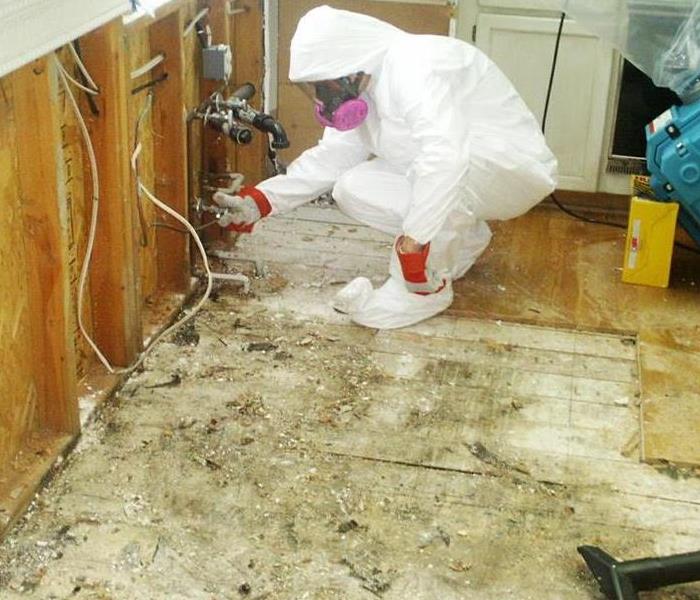What You Should Know About Mold Remediation and Removal
3/1/2018 (Permalink)
Mold is found under the fungi classification. It is a soft green or at times grey growth which develops on objects or old food left for a lengthy period in warm, wet air. It can be found in outdoor and indoor places, thus, it is important for the indoor humidity to be kept below forty-five percent because a higher humidity supports the growth of this class of fungus. Floods and high humidity levels often lead to microbial growth and fungus. Microbial growth can be present in an area, but that does not classify it as mold. The most efficient method of controlling microbial growth is by the moderation of temperature. When the temperature is lowered, the rate of microbial growth decreases rapidly.
Mold and mildew are two fungi that people often tend to confuse. Mildew appears to be powdery and white in color then later turns to brown, black or yellow. The other fungus seems fuzzy but can appear in similar colors as the mildew. Mildew damages crops while molds damage the structural foundations of homes. Both fungi are usually accompanied by a musty odor which can lead to more health issues. It likes to thrive in moisturized areas and grows quickly into colonies with water exposure. These colonies are responsible for the production of irritants and allergens that affect the health of people.
For mitigation of mold to take place, all sources of moisture and water need to be addressed otherwise it may regrow. The first step is to remove all traces of moldy growth immediately. Five fundamental principles must be applied by homeowners and employers to ensure successful mitigation of this fungus. They should focus on the source and moisture removal, safety, contamination control and assessment. Proper mitigation is essential once the fungi is removed because areas must be monitored to prevent it from occurring again.
It is important to determine the party that will be in charge of the mold cleanup. An environmental hygienist can determine what treatment can be used for this fungus. These hygienists mitigate the problem by sealing off the affected areas with plastic sheets to stop dispersion of the spores. Fungus should be dealt with by the wearing a face mask with high filtration and neoprene gloves. Once the mold cleanup is finished, the air around it needs to be cleaned using air exchange and scrubbers.
It is essential for the environmental hygienist to have a protective suit because harsh chemicals are used for the mold cleanup. Hard surfaces with moldy growth have to be scrubbed with water and detergent and left to dry completely. Porous materials like carpets and ceiling tiles need to be disposed of by the environmental hygienists if they get moldy. The crevices of these porous materials are prone to mold growth, and painting can only happen once the environmental hygienists complete the mold cleanup otherwise the paint peels off. The correct mitigation strategies need to be employed for effective cleanup.
Visit www.SERVPROsalem.com for more information on mold remediation.






 24/7 Emergency Service
24/7 Emergency Service
